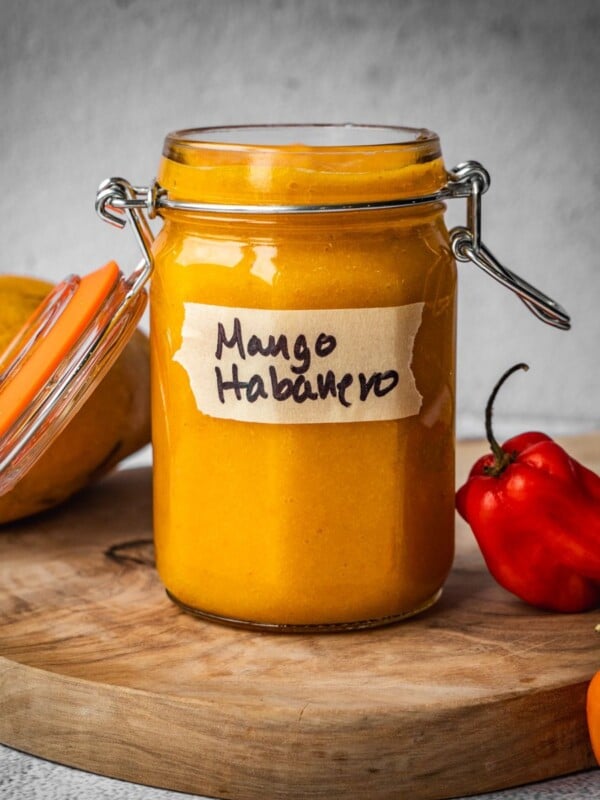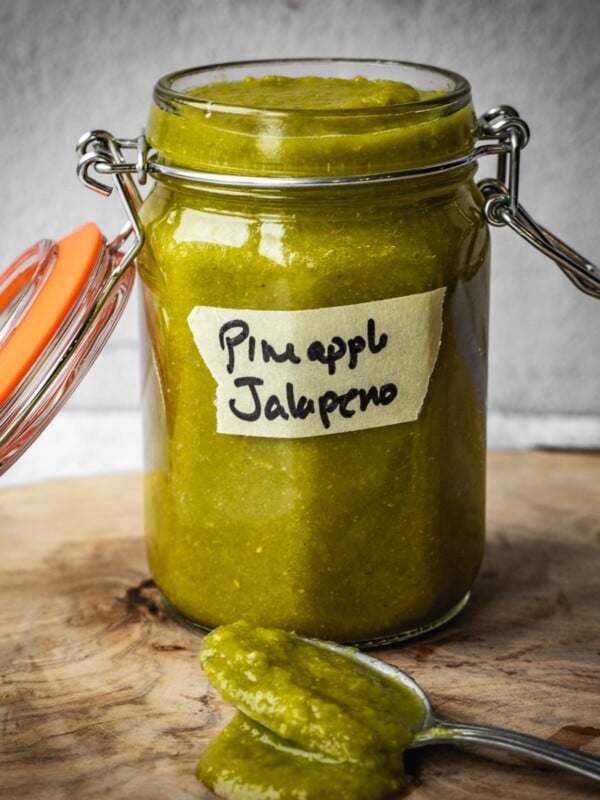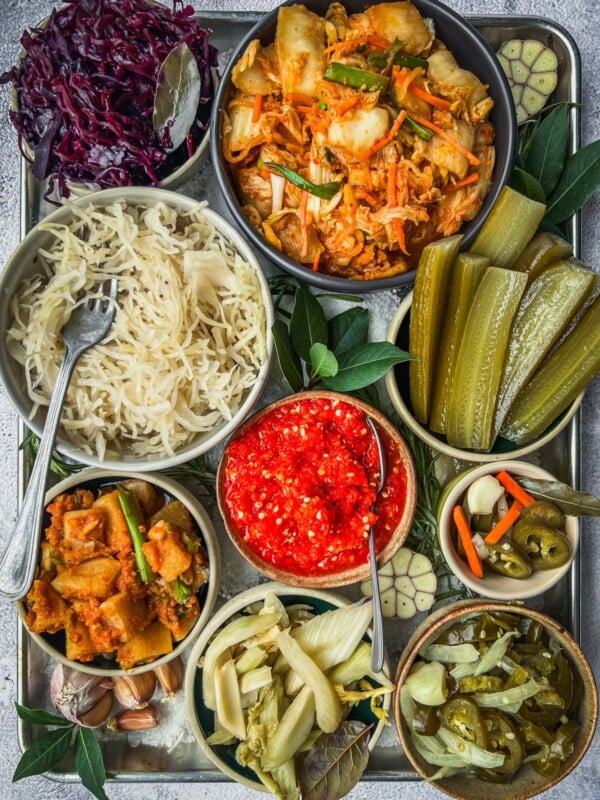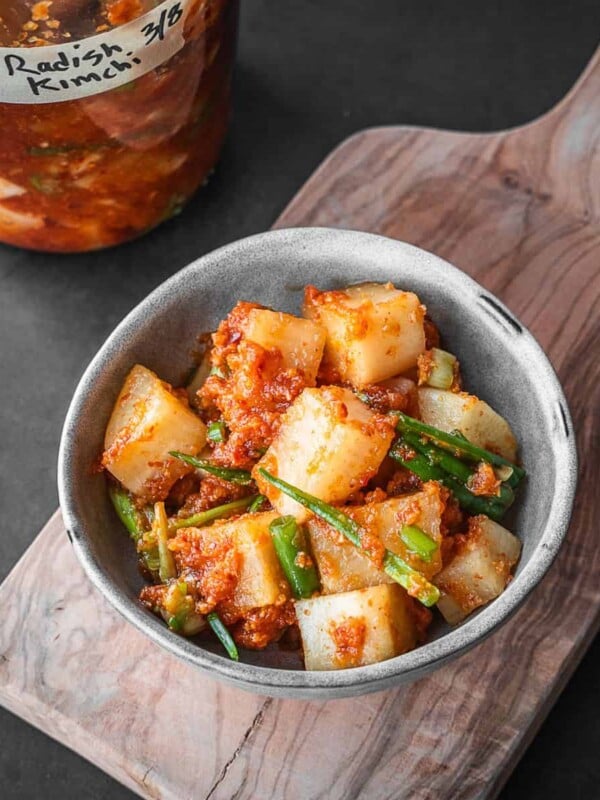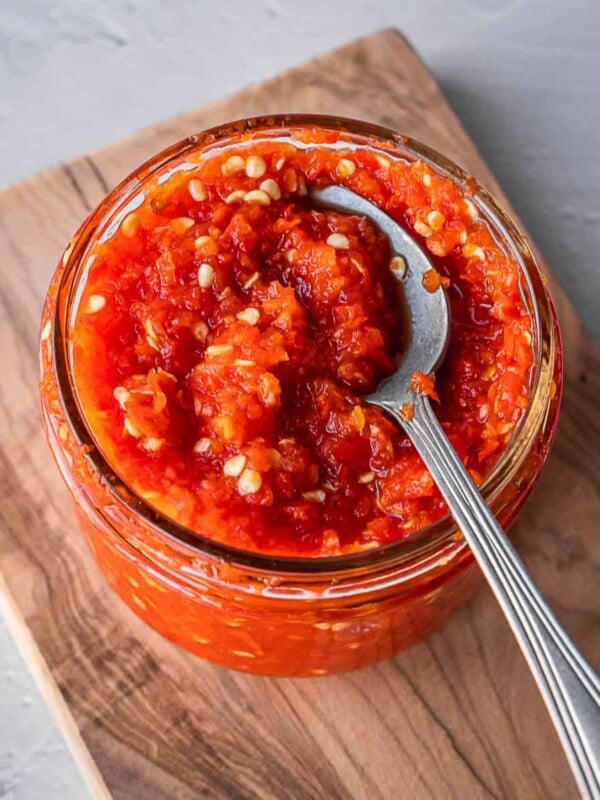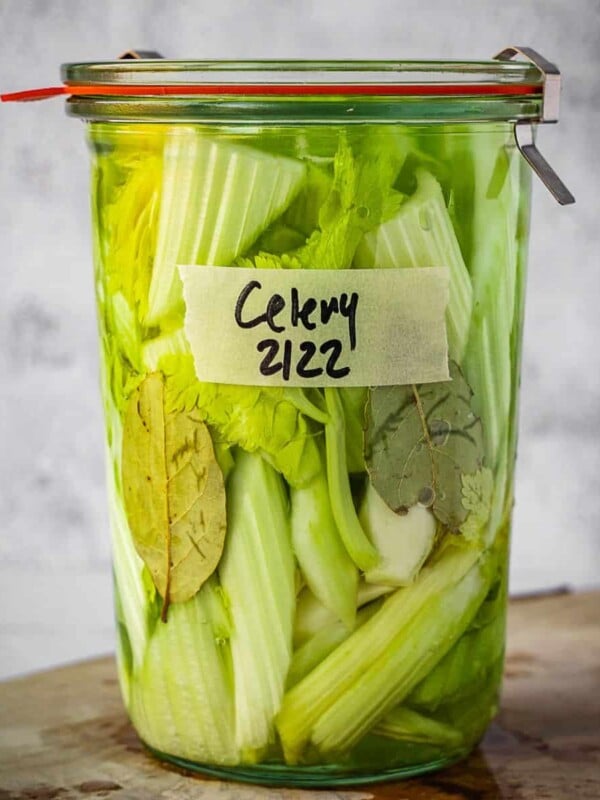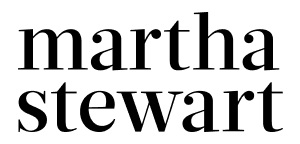Fermented jalapenos are a great way to use and preserve that bountiful summer harvest or farmer’s market haul. Whether you are a beginner or an expert fermenter, this recipe breaks down everything you need to know from equipment to fermenting safety. The recipe takes 15 minutes to prepare and the ferment will be ready in a few days.
This recipe is featured in my 11 Easy and Straightforward Fermentation Recipes post.

Table of Contents
What is Lacto Fermentation?
Fermentation (more precisely lacto-fermentation or lactic acid fermentation) involves submerging vegetables and/or fruits in a brine solution (salt and water). Rather than killing bacteria (like pickling does), this process takes a different approach.
When done correctly, fermentation kills or suppresses the bad bacteria while giving the beneficial bacteria a chance to thrive. This fermentation process transforms the vegetables and/or fruits into healthy lacto-fermented food with beneficial probiotics.
If you’ve ever tasted kimchee, fermented cabbage (sauerkraut) or red cabbage sauerkraut, you’ll notice they have an acidity to them that is different from a traditional vinegar pickle. They taste tangy as opposed to pickled. Furthermore, they may even tingle on your tongue. This fizziness is attributed to the carbon dioxide that is generated in the process of fermentation.
I suggest you read my comprehensive post on lacto-fermentation, especially if you are a beginner or this is your first time fermenting. It’ll give you all the basics you need to confidently ferment all the vegetables! Also, make sure to try my fermented hot sauce recipe, Sambal Oelek (Indonesian chili paste), fermented tomatoes and fermented lemons.
Ingredients
Like many of my other fermentation recipes, all you need are simple fresh ingredients. Make sure you use fresh jalapeños.

- Peppers: Jalapeño peppers are ideal as they have the perfect balance of heat. But you can totally use serrano peppers or other hot peppers. If you have access to ripe red jalapeños, use those! Grow your own peppers or buy them fresh from the market or grocery store. Try my quick pickled jalapeno and my pineapple jalapeno hot sauce recipes too.
- Salt: When fermenting, use kosher salt, pickling salt, or sea salt. Avoid using table salt as it has added iodine which may affect fermentation.
- Garlic: I love using garlic in all my ferments but the choice is up to you. You can omit the garlic if you prefer
- Onions: Sliced onions go hand in hand with sliced jalapenos. Again, the choice is yours here. You can omit them. Also, try my Mexican Pickled Onions.
- Vinegar (optional): At the end of the ferment, I like using neutral white distilled vinegar as it won’t affect the overall flavor, but feel free to use another acid like white wine vinegar, apple cider vinegar, or even lemon juice or lime juice. Avoid using dark vinegar like balsamic or red wine. Adding vinegar is optional, but I recommend it as it helps balance out the flavor and will also help with preserving the peppers for longer in the fridge.
See the recipe card for full information on ingredients and quantities.
The Right Salt-to-Water Ratio
Though peppers can be fermented using a dry salting technique, for this fermented jalapeno peppers recipe, you will be using a salt water brine solution to ferment the peppers. This technique can be applied to fermented celery, fermented radishes, fermented carrots, fermented beets, giardiniera mix, and of course fermented cucumbers.
Filtered water or spring water is preferred over tap water because the chlorine in tap water could affect fermentation. I recommend using a 3.5% salt solution. This translates to 3.5 grams of salt per 100 grams of water. A good place to start is 1 tablespoon of sea salt or kosher salt to 2 cups of water (which works out to 17g of salt to 475g of water – a 3.5% ratio).
Equipment and Supplies
Fermentation lids (also known as airlocks or airlock lids) are not essential, but highly recommended. This is a lid with a valve that allows gasses to escape safely avoiding any dangerous buildups of gas. The lids fit directly onto a standard mason jar. There are several options like the Klemon and Masontops (affiliate links).

You can use a standard mason jar lid and unscrew it twice a day to let any built-up air escape and quickly reseal. This option is not ideal as it can allow oxygen back in. I recommend using glass fermentation weight (affiliate link) which will keep the peppers submerged in the salt brine.
I recommend using a wide-mouth mason jar because many of the lids mentioned above are designed specifically for it. This recipe calls for a 1-pint (approx. 500ml) jar. I prefer using a glass jar, but you can also use ceramic crocks (affiliate link) or another fermenting vessel of your choice. I stay clear of metal and plastic containers (though there are many who use plastic containers for fermenting).
Fermenting fruits and vegetables is generally very safe. But to make sure that you are not introducing any bad bacteria or mold in the project, keep your equipment and tools as clean as possible. You don’t need to sterilize them (as you would if you are water bath canning), but washing everything in soapy warm water and air drying them is the best way to reduce the risk of cross-contamination.
How to Make Lacto-Fermented Jalapenos
This is a pretty easy recipe but I recommend that you read through all the steps before you start.

Step 1. Prepare the saltwater brine. In a large measuring cup or jug, combine the fresh water with salt. Mix well to dissolve the salt.

Step 2. Pack the jars. To each jar, add the garlic cloves, sliced peppers, onions and any extra ingredients you want to include.

Step 3. Add weight. Apply the fermentation glass weight (if using), making sure that everything is submerged in the brine.

Step 4. Pour brine. Carefully pour the brine solution over the peppers.

Step 5. Add fermentation lid. Apply the fermentation lid to the top of the jar.

Step 6. Ferment. Ferment the peppers for at least 5 days away from direct sunlight. On day 5, taste the peppers. If you want them to be tangier and sourer, replace the weight and lid and continue to ferment for a few more days (you can go up to 14 days total). If you’re happy with the taste, remove the weight, and fermentation lid. Add the optional vinegar, apply a regular lid and place the ferment in the fridge.
Fermentation Time, Safety and Storage
While the jalapenos are fermenting keep them on the counter away from direct sunlight. The ideal fermenting temperature is room temperature, which is approximately 60°F to 75°F (15°C to 24°C).
The fermentation time will depend entirely on your preference. I recommend a minimum of 5 days. By the 5th day, you’ll notice that the peppers have turned from dark green to a dull green color.
This is your indication that the fermented peppers are ready. Give them a taste. If you like them the way they are, you can proceed to the next step. If you prefer a more tangy flavor, ferment for another week or so.
Remember that the finished ferment must be refrigerated!

Expert Tips
- Wear gloves! When handling spicy peppers, I highly recommend that you wear latex or nitrile gloves to protect yourself. No one wants to rub their eyes with a spicy finger!
- Change it up. Feel free to add some other vegetables to your mix like sliced carrots.
- Keep it clean. Wash your jars and utensils before using them to prevent unwanted bacterial growth using hot soapy water. Optionally, you can sterilize them by boiling them in hot water for 5 minutes. The sterilization isn’t necessary, but does add an extra layer of protection.
- Safety first. Make sure to refrigerate your final product in the fridge.
- Like it hot? Try some of my other spicy Mexican condiments like Salsa Macha, Salsa Roja and Chipotle hot sauce.
Recipe FAQs
A cloudy brine is common and usually not a cause for concern. It could be due to microbial or yeast activity, or simply starches and proteins from the breaking down of the peppers and other ingredients in the ferment. Always trust your senses; if something smells or looks off, it’s best to err on the side of caution and discard it. When in doubt, throw it out.
Pickling refers to submerging fruits and vegetables in a vinegar solution. It is a different way to preserve produce.
Kahm yeast is a type of benign, surface yeast that can develop on the brine or surface of fermented vegetables (looks like a white film). While it’s generally harmless, it’s advisable to remove it to maintain the quality of the fermented product.
Other Fermentation Recipes
Fermentation
Fermentation
Fermentation
Fermentation
If you make these Fermented Jalapeños (Lacto-Fermented Peppers Recipe) or any other fermentation recipe on Urban Farm and Kitchen, please take a moment to rate the recipe and leave a comment below. It’s such a help to others who want to try the recipe.
For more Urban Farm and Kitchen, follow along on Instagram, Facebook, and Pinterest, visit the Urban Farm Shop, or subscribe for new posts via email.
Fermented Jalapeños (Lacto-Fermented Peppers Recipe)
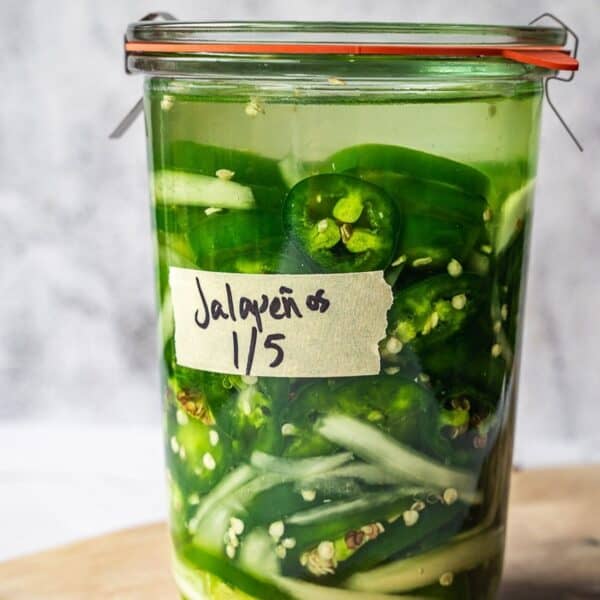
Equipment
- ¾ quart mason jar (24 fl oz mason jar)
- Regular canning jar lid
Ingredients
- 2 cups Unchlorinated water – Bottled, spring or filtered water is fine
- 1 tbsp Kosher salt, sea salt or pickling salt
- 1 lb Fresh jalapenos – Sliced into rings about ¼ inch thick
- 1 Small onion – Cut into strips
- 2 Garlic cloves – Peeled
After Fermentation is Complete
- 1-2 tbsp White vinegar (Optional) – See note
Instructions
- Prepare the saltwater brine. In a large measuring cup or jug, combine the fresh water with salt. Mix well to dissolve the salt.
- Pack the jars. To each jar, add the garlic cloves, sliced peppers, onions and any extra ingredients you want to include.
- Add weight. Apply the fermentation glass weight (if using).
- Pour brine. Carefully pour the brine solution over the peppers making sure you have no air bubbles and that the brine reaches the top of the weight.
- Add fermentation lid. Apply the fermentation lid to the top of the jar.
- Ferment. Ferment the peppers for at least 5 days away from direct sunlight. On day 5, taste the peppers. If you want them to be tangier and sourer, replace the weight and lid and continue to ferment for a few more days (you can go up to 14 days total). If you’re happy with the taste, remove the weight, and fermentation lid. Add the optional vinegar, apply a regular lid and place the ferment in the fridge.
Notes
Nutrition
Nutrition information is automatically calculated, so should only be used as an approximation.
 Like this recipe? Rate & comment below!
Like this recipe? Rate & comment below!
